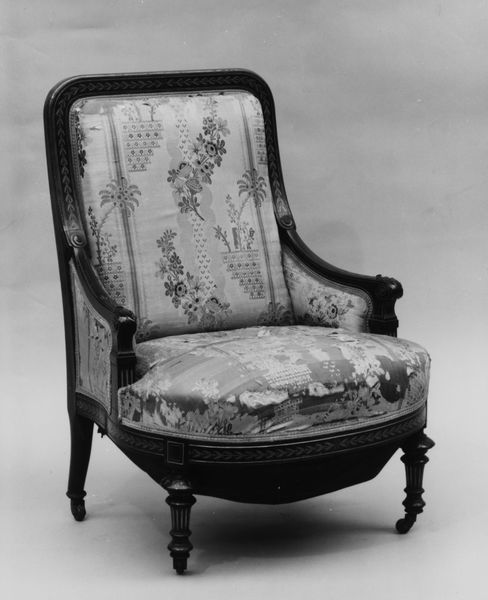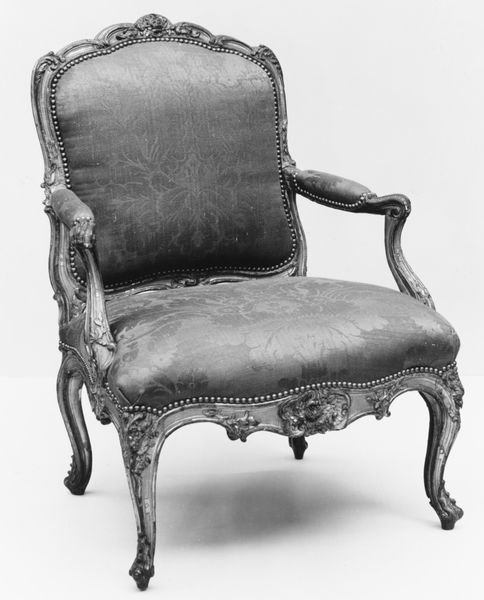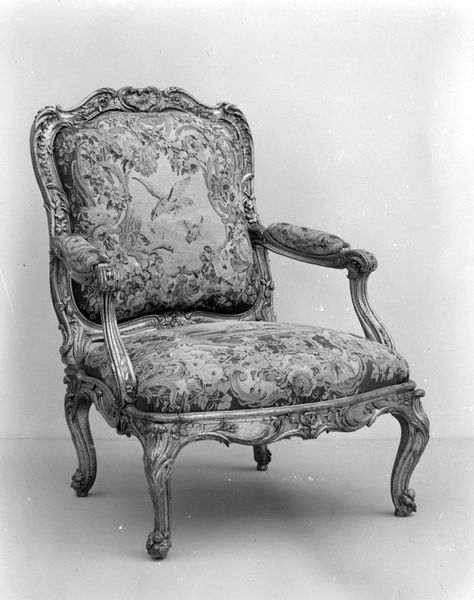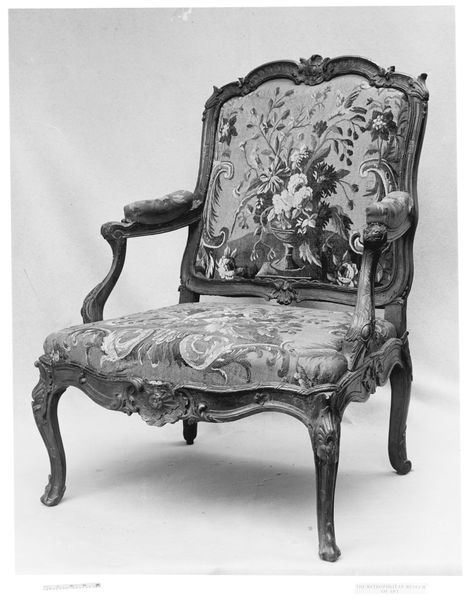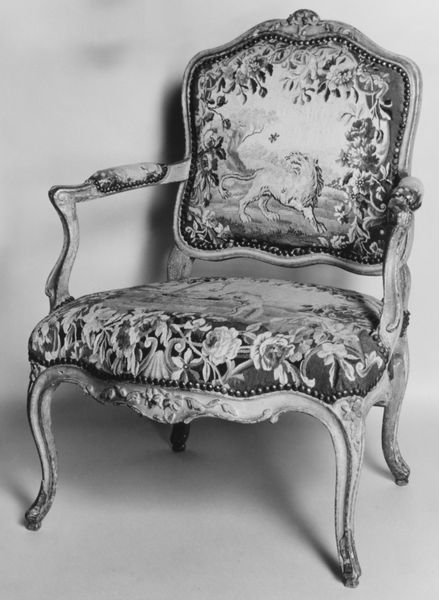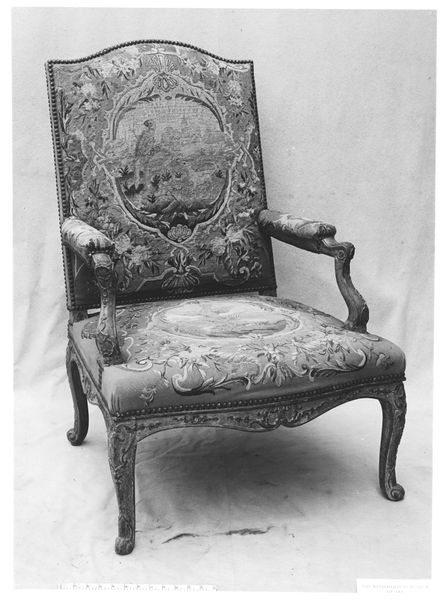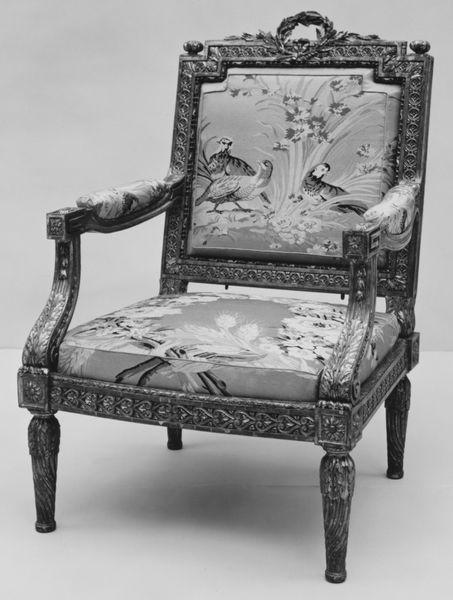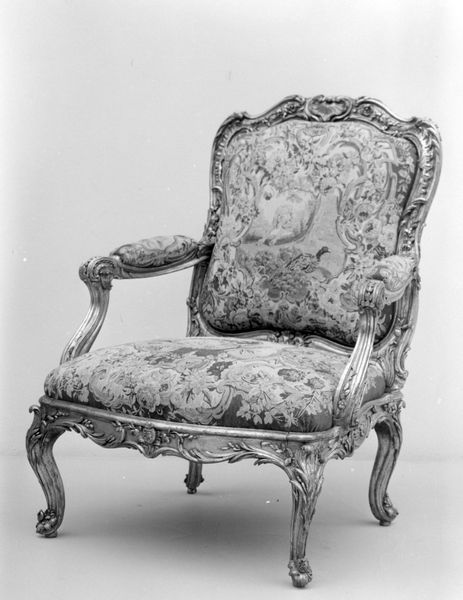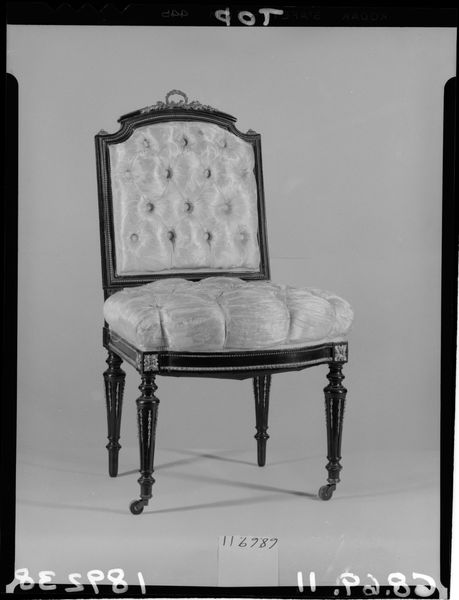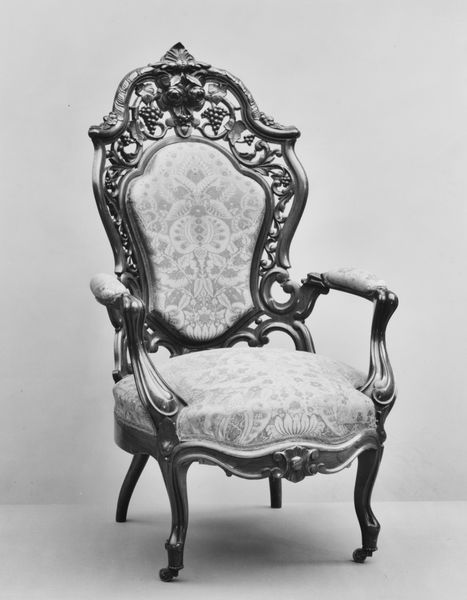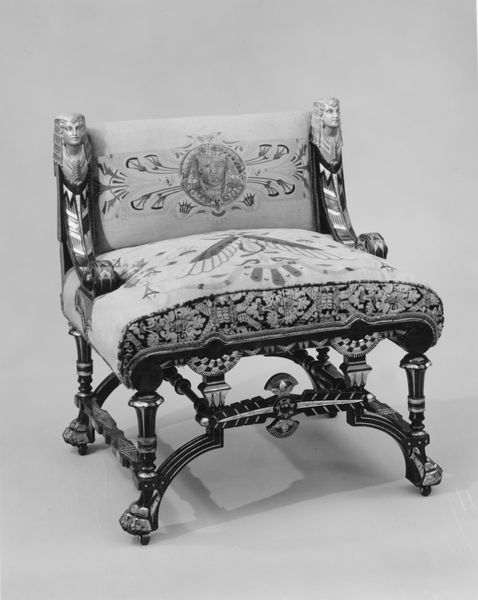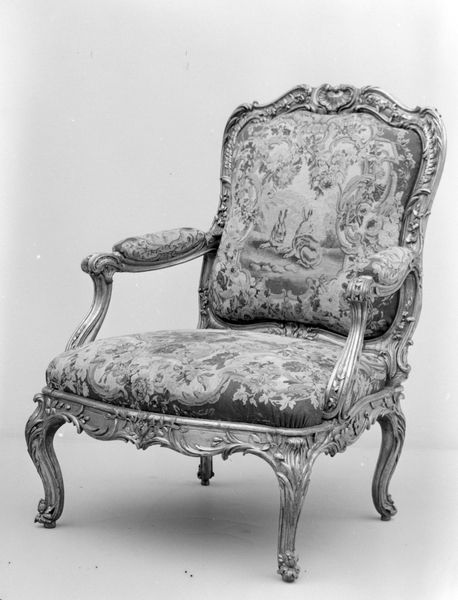
sculpture, wood
#
baroque
#
sculpture
#
furniture
#
sculpture
#
wood
#
decorative-art
Dimensions: 47 1/2 × 37 1/2 × 84 in. (120.7 × 95.3 × 213.4 cm)
Copyright: Public Domain
Editor: Here we have a “Daybed,” crafted between 1725 and 1750 by the School of Toulon. The intricate woodwork really catches the eye, it’s almost sculptural. The deep buttoned upholstery looks comfortable. What can you tell me about it? Curator: Indeed! Focusing on its place in society, this daybed embodies the Baroque era’s opulent display of power and status. Furniture became a political statement. How do you think an object like this would be used, and for whom would it be made? Editor: I imagine it was commissioned, for someone of wealth… for lounging and receiving guests? Almost like a throne, but more relaxed? Curator: Precisely. It signifies wealth, leisure, and control. The location—in a salon, for example—and who reclines on it, affects its symbolic meaning. The aristocracy sought to reinforce their authority and elevate themselves in social standing through pieces like this. Can you see how the museum’s choice to display it today impacts that original intent? Editor: It makes me consider its role as art, not just functional furniture. It almost democratizes it… although viewing it behind glass creates distance too. Curator: Right. Museums have played a part in shifting perceptions of objects like this daybed, recontextualizing their status within a contemporary social dialogue. Think about how that changes our perspective compared to its original use in the 18th century. Editor: So, viewing this “Daybed” is not just seeing a pretty piece of furniture; it is engaging with complex power structures and how taste-making institutions affect our interpretation. Fascinating. Curator: Exactly. It makes us reconsider how art participates in political life even today.
Comments
No comments
Be the first to comment and join the conversation on the ultimate creative platform.
